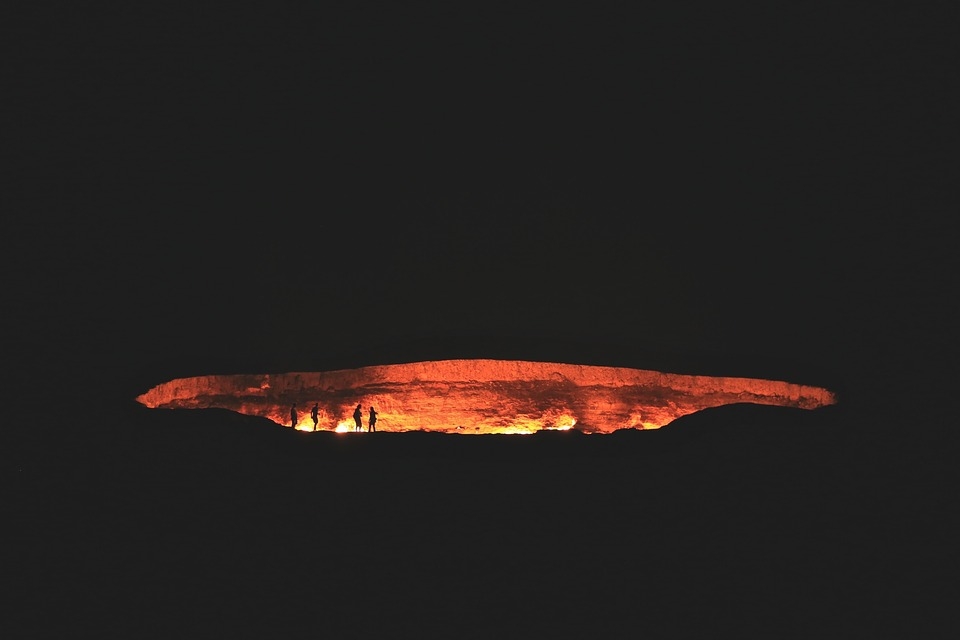When it comes to earthquakes and eruptions, the Pacific Ring of Fire is what geologists and volcanologists are watching out for. A recent report reveals which of these volcanoes in the Ring of Fire are the most dangerous of them all.
The Pacific Ring of Fire is made up of volcanoes and seismic hotspots that line the Pacific ocean. It is also were 90 percent of natural calamities like earthquakes happen. This region of the world is where the Pacifies tectonic plate strikes the other plates, thus resulting in volcanic and seismic activity. Macquarie University volcanologist Heather Handley revealed which of the volcanoes in the Ring of Fire would have the most dangerous eruptions.
Handley revealed that there are five volcanoes in the Ring of Fire that are the most dangerous. Two of the volcanoes are in Indonesia; Mount Agung in Bali and Mount Sinabung in northern Sumatra. The other three are Mount Mayon in Albay, Philippines, Mount Kadovar in Papua New Guinea, and Mount Kusatsu-Shirane in Honshu, Japan. Each of these volcanoes has erupted once over the decade, with Mount Sinabung having first erupted again after being dormant for 400 years in 2010. While Mount Kusatsu-Shirane is one of 100 active volcanoes in Japan, its last eruption in 2018 only produced one fatality, the incident also triggered an avalanche that injured many.
Meanwhile, New Zealand recently experienced a volcano-related incident, as the volcano from White Island erupted. The eruption produced six fatalities, three more presumed dead, and many more were injured and some of the people who were present on the island deemed missing. While the eruption produced more gas and vapors rather than molten rocks, experts believe that there will be more eruptions coming from the country’s volcano, and this was just the first.
Due to the fact that New Zealand is right in the midst of the Ring of Fire, even the slightest shifts in the tectonic plates could trigger another eruption or more volcanic activity or even earthquakes and tsunamis. Local experts believe that it is only a matter of time before this happens again, whether in the coming days or in the coming years.



 Why some people don't trust science – and how to change their minds
Why some people don't trust science – and how to change their minds  Alpha, beta, theta: what are brain states and brain waves? And can we control them?
Alpha, beta, theta: what are brain states and brain waves? And can we control them?  Why is the universe ripping itself apart? A new study of exploding stars shows dark energy may be more complicated than we thought
Why is the universe ripping itself apart? A new study of exploding stars shows dark energy may be more complicated than we thought  The brightest object in the universe is a black hole that eats a star a day
The brightest object in the universe is a black hole that eats a star a day  Archeoastronomy uses the rare times and places of previous total solar eclipses to help us measure history
Archeoastronomy uses the rare times and places of previous total solar eclipses to help us measure history  What is minoxidil, the anti-balding hair growth treatment? Here’s what the science says
What is minoxidil, the anti-balding hair growth treatment? Here’s what the science says  The rising flood of space junk is a risk to us on Earth – and governments are on the hook
The rising flood of space junk is a risk to us on Earth – and governments are on the hook  Why now is the time to address humanity’s impact on the moon
Why now is the time to address humanity’s impact on the moon  Six space missions to look forward to in 2024
Six space missions to look forward to in 2024  Larger and more frequent solar storms will make for potential disruptions and spectacular auroras on Earth
Larger and more frequent solar storms will make for potential disruptions and spectacular auroras on Earth  Eggs from men, sperm from women: how stem cell science may change how we reproduce
Eggs from men, sperm from women: how stem cell science may change how we reproduce  Customizing mRNA is easy, and that's what makes it the next frontier for personalized medicine − a molecular biologist explains
Customizing mRNA is easy, and that's what makes it the next frontier for personalized medicine − a molecular biologist explains  Orbital resonance − the striking gravitational dance done by planets with aligning orbits
Orbital resonance − the striking gravitational dance done by planets with aligning orbits  The brain is the most complicated object in the universe. This is the story of scientists’ quest to decode it – and read people’s minds
The brain is the most complicated object in the universe. This is the story of scientists’ quest to decode it – and read people’s minds  Could a telescope ever see the beginning of time? An astronomer explains
Could a telescope ever see the beginning of time? An astronomer explains 





























